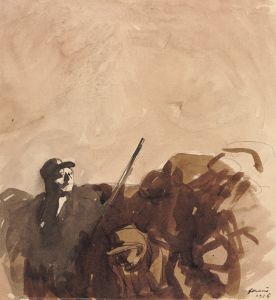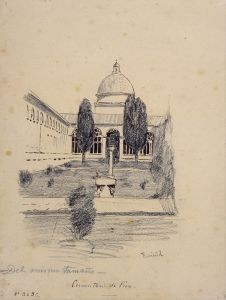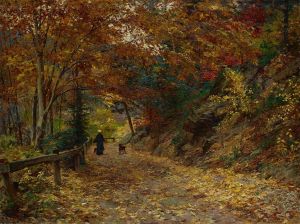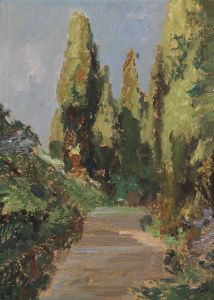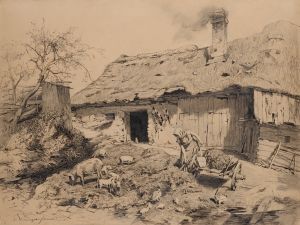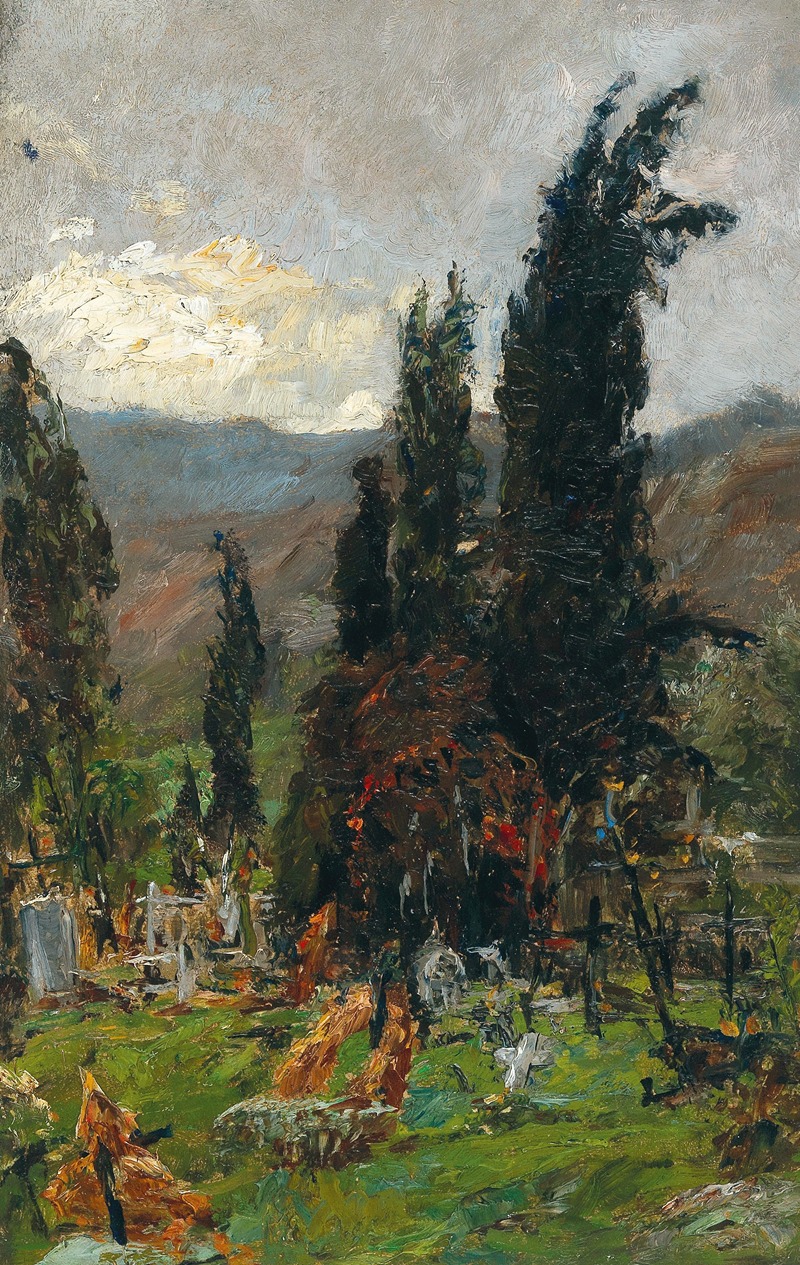
View of a cemetery at dusk
A hand-painted replica of Olga Wisinger-Florian’s masterpiece View of a cemetery at dusk, meticulously crafted by professional artists to capture the true essence of the original. Each piece is created with museum-quality canvas and rare mineral pigments, carefully painted by experienced artists with delicate brushstrokes and rich, layered colors to perfectly recreate the texture of the original artwork. Unlike machine-printed reproductions, this hand-painted version brings the painting to life, infused with the artist’s emotions and skill in every stroke. Whether for personal collection or home decoration, it instantly elevates the artistic atmosphere of any space.
Olga Wisinger-Florian was an Austrian painter known for her contributions to the Impressionist movement, particularly in the realm of landscape painting. Born on November 1, 1844, in Vienna, she initially pursued a career in music before turning to painting in her late twenties. She studied under several prominent artists, including Melchior Fritsch and August Schaeffer, and was significantly influenced by the works of Emil Jakob Schindler, a leading figure in Austrian landscape painting.
Wisinger-Florian's work is characterized by its vibrant use of color and light, capturing the natural beauty of the Austrian countryside. Her paintings often depict gardens, parks, and rural scenes, reflecting her keen observation of nature and her ability to convey its transient moods. She was a prominent member of the Austrian Association of Women Artists and played a crucial role in promoting the work of female artists in a male-dominated art world.
"View of a Cemetery at Dusk" is one of Wisinger-Florian's notable works, although specific details about the painting, such as its creation date and current location, are not widely documented. The painting likely exemplifies her typical style, with an emphasis on atmospheric effects and the interplay of light and shadow. The subject matter, a cemetery at dusk, suggests a contemplative mood, possibly exploring themes of mortality and the passage of time, common in many landscape paintings of the era.
Wisinger-Florian's approach to painting was deeply rooted in the Impressionist tradition, focusing on capturing the fleeting effects of light and color rather than precise detail. This technique allowed her to convey a sense of immediacy and emotion, drawing viewers into the serene yet poignant scenes she depicted. Her work was well-received during her lifetime, earning her numerous accolades and exhibitions across Europe.
Despite the challenges faced by women artists in the 19th and early 20th centuries, Wisinger-Florian achieved considerable success and recognition. She exhibited her work at prestigious venues, including the Vienna Secession and the Paris Salon, and received several awards for her contributions to art. Her legacy continues to be celebrated for its artistic merit and its role in advancing the status of women in the arts.
While specific information about "View of a Cemetery at Dusk" is limited, Olga Wisinger-Florian's broader body of work remains an important part of the Impressionist movement in Austria. Her paintings are held in various collections, both public and private, and continue to be studied and appreciated for their beauty and historical significance.









